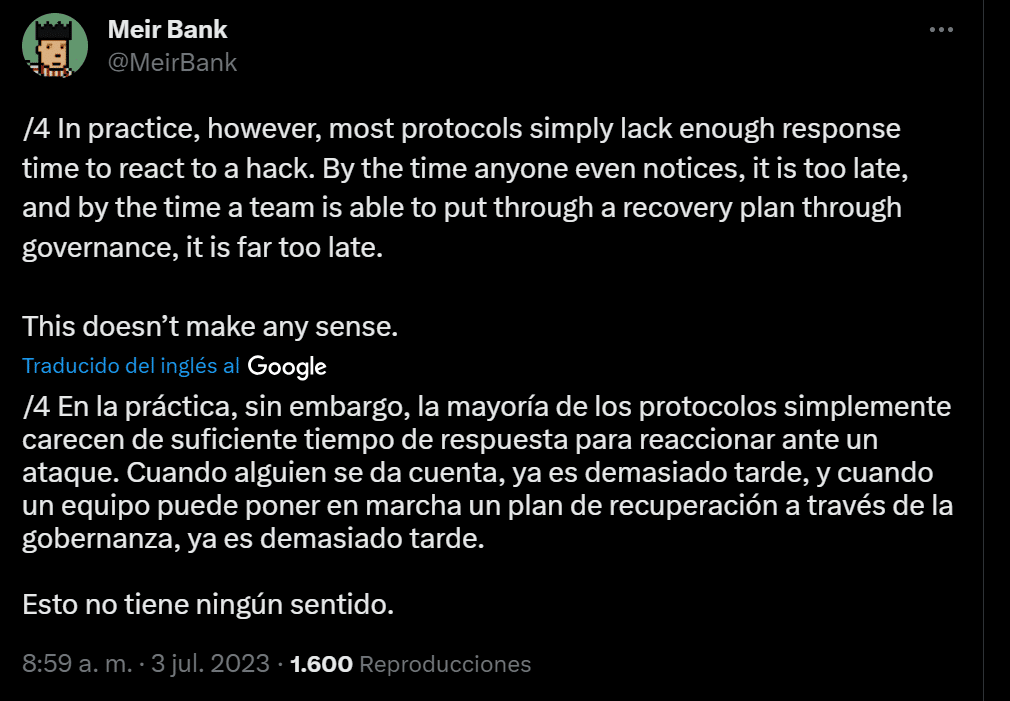Many decentralized finance (DeFi) protocols have been launched in recent years, adding large numbers of users and funds locked into them. However, they have also become a popular target for hackers, and that is intended to correct the Circuit Breaker proposal.
This idea is set out in the ERC 7265 (CKD stands for Ethereum request for commentsand is the method by which changes to the network protocol are proposed. It consists in setting a pre-established limit for certain withdrawals of funds which occur almost exclusively when the security of a DeFi is breached. Circuit Breaker relies on a smart contract to execute this limit at the appropriate time.
The initiative was developed by the developers my bank, Phillipe Dumonet and two more under the pseudonyms Diyahir And vol, It would act as a circuit breaker that would activate to cut off the loss of money at a certain point. In principle, this limit would be 25% or 40% of the protocol’s token pool. Under normal conditions, in a short period of time, token withdrawals exceeding this parameter rarely occur. ensures Bank.
There are already protocols with similar limits. explained Dumonet to the portal blocks. However, Circuit Breaker is the first attempt to standardize them by including them in the Ethereum protocol itself.
There is one downside to setting this type of limit, and that is the could lead to “false positives” that unduly limit the services of the protocols. To prevent this, each protocol could adjust the parameters of the circuit breaker according to the habitual usage of its users.
In this sense, the abstract, which can be found in the ERC-7265 repository, states: “In order to maintain correct internal billing for integrated protocols and to give developers maximum flexibility, they can specify whether the circuit-breaker contract needs to delay billing. ‘ and temporarily protect the outputs during the cool down period or reverse the output attempts.’ In other words, Token outflows could be slowed or stopped altogether.
The ERC-7265 emerged from the ETHTokyo hackathon in April 2023. According to its inventors, it is a proposal that can be easily integrated into new protocols, but can also be added to existing ones without major complications.
Hacks in DeFi, a pressing issue in Ethereum
As recently reported in CriptoNoticias, In the first half of 2023, a total of $477 million was lost to DeFi protocol hacks. One of the most recent was the attack on the Poly Network, which stole $42 billion worth of tokens. However, this time the various security mechanisms of the projects involved prevented the hacker from taking large profits.

Of course, the lack of guarantees of many DeFi protocols on Ethereum jeopardizes their adoption as it erodes user trust. As Dumonet himself explains: “No one wants to risk their capital on something that they feel has a high probability of losing.”
For its part, the bank added that the losses caused by hacks in DeFi harm not only users but also companies and their employees. This slows down the progress of a technology that he envisions will reach its peak of popularity in 5 or 10 years.